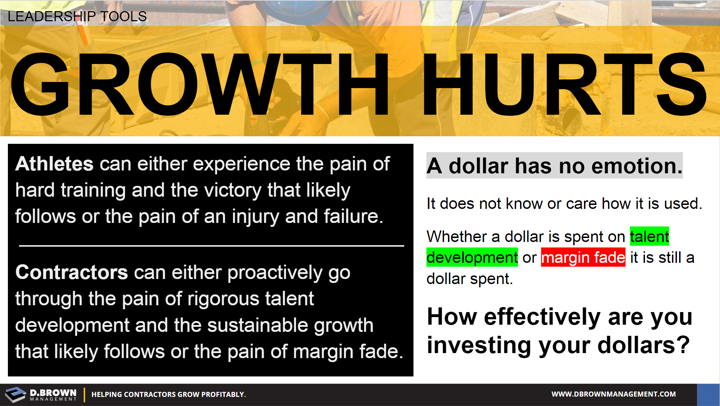This may come from the different levels - for instance a crafts person who is too focused on individual productivity to train their apprentice. It may come from the Project Manager who is too overloaded with work to train their Project Engineer.
The only way a contractor can truly grow sustainably is to build a culture that is focused on continuous personal-development and teaching others. Truly great development hurts - it stretches our brains to grow the same way physical exercise stretches our muscles. Most of your team will resist this level of exertion and insist there is an easier way. Most of your team will rationalize away performance problems and downplay the need for training.
The management teams of growing contractors systematically lead their teams through extremely rigorous training building them to dominate tomorrow’s construction environment.
Look at your business and the stage of growth it is in.
Is your team prepared (or preparing) for the next stage of growth?
What pain are you avoiding today that will be 10X worse in the near future?

